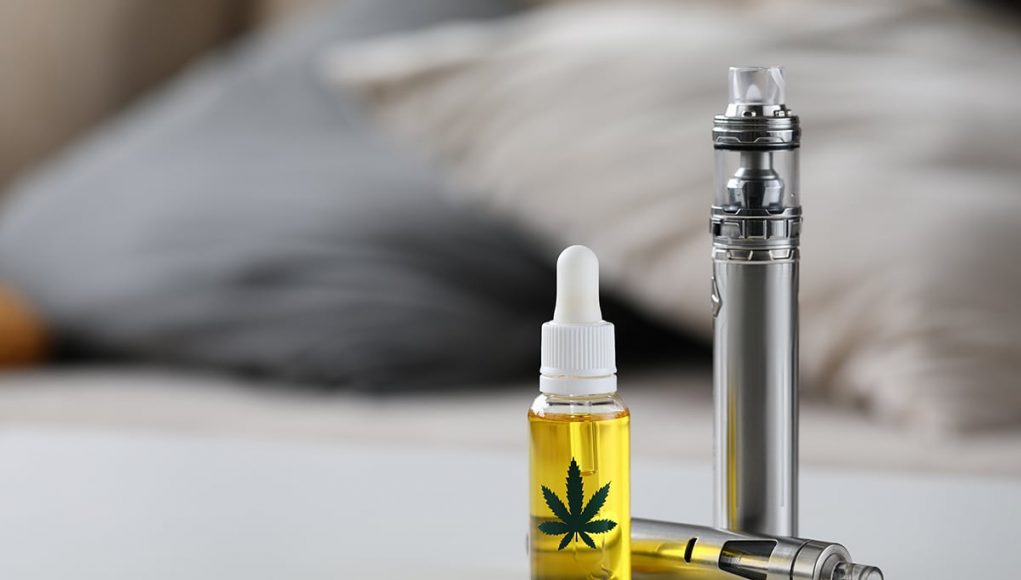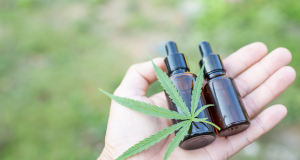Titled, “The association between vaping and driving under the influence of cannabis among US young adults,” the current study looked through data from the 2020 National Survey on Drug Use and Health (NSDUH) and included 7,860 US adults aged 18-25. The research team examined past-year cannabis DUI prevalence by past-year vaping at the intersection of past-year cannabis use.
The compiled data indicated that 23.8% of the participants vaped in the past year and that 9.7% reported past-year cannabis DUI. “Past-year vaping was positively associated with past-year cannabis use (adjusted prevalence ratio [aPR]=2.12, 95% CI=1.91, 2.35). Among those with cannabis use in the past year, past-year vaping was positively associated with past-year cannabis DUI (aPR=1.52, 95% CI=1.25, 1.84),” reported the study. To this effect, the research team concluded that there was indeed a relationship between vaping and cannabis DUI among those who used cannabis.
Cannabis vaping is on the rise
Meanwhile, a 2022 study published in JAMA Pediatrics, using data from the Population Assessment of Tobacco and Health (PATH) study, found that actually most teens and young adults are currently vaping cannabis not nicotine.
Titled, “Evaluation of Self-reported Cannabis Vaping Among US Youth and Young Adults Who Use e-Cigarettes,” the study aimed to differentiate between cannabis and nicotine vaping. Compiled and analyzed by assistant professor at the University of Alabama at Birmingham’s School of Public Health Ruoyan Sun, the data indicated that 35% of 12- to 14-year-olds, 51.3% of 15- to 17- year-olds and 54.6% of 18- to 24-year-olds, reported vaping cannabis rather than nicotine.
In fact, a 20-year national US study reported a 245% increase in cannabis use among minors alongside a steady decline in alcohol consumption. Published in the peer-reviewed journal Clinical Toxicology, the study reported 338,727 cases of intentional misuse and abuse for children aged between 6 and 18. Most of these cases were found in males at 58.3%, while over 80% of all reported exposure cases occurred in young people aged 13 to 18.
This data indicated a change in abuse patterns over time. While in the past the majority of abuse cases involved exposure to ethanol (alcohol). Since 2011 child alcohol abuse has steadily declined while marijuana abuse has steadily risen, with the most dramatic increase taking place between 2017 and 2020.
Similarly, another recent study published in JAMA Pediatrics, reported that between 2013 and 2020 the prevalence of cannabis vaping amongst teens has doubled across the US and Canada, with approximately 1 in 3 grade 12 students vaping the substance in 2018 alone.
The review analyzed 17 studies from the United States and Canada published between 2015 and 2021, incorporating of a total of 198,845 surveyed adolescents. Titled, “Prevalence of Adolescent Cannabis Vaping. A Systematic Review and Meta-analysis of US and Canadian Studies,” the analysis found that the lifetime prevalence of cannabis vaping expanded from 6.1% in 2013, to 13.6% in 2020. Moreover, the prevalence of cannabis vaping doubled between 2017 to 2020, from 7.2% to 13.2%. Additionally, 30-day prevalence increased 7-fold from 2013 to 2020 (1.6% to 8.4%).
“A possible explanation for the upward trajectory in the prevalence of cannabis vaping observed in our study timeframe is the increasing uptake of vaping products generally used among youth and young adults, widening access to cannabis vaping products through legalization of cannabis, and the decrease in perceived risk of harm toward cannabis in the last decade,” said the authors.
Cannabis vaping among certain subgroups
While another recent study titled, “Increases in Frequent Vaping of Cannabis Among High School Seniors in the United States, 2018–2019,” found that the rise in cannabis vaping was greater in certain subgroups such as students 18 years or older, female students, and those who reported using other drugs within the past year.
“Frequent vaping of cannabis significantly increased from 2.1% to 4.9%, a 131.4% increase. This increase was larger than the increase for any vaping of cannabis (which increased 85.9%). Notable significant increases occurred among students aged ≥18 years (a 154.9% increase), female students (a 183.5% increase), those who go out 4–7 evenings per week (a 163.0% increase), and those reporting past-year non medical prescription opioid use (a 184.7% increase),” read the study Abstract.
Is CBD vaping riskier than nicotine vaping?
While a study titled, “Not all vaping is the same: differential pulmonary effects of vaping cannabidiol versus nicotine,” compared the effects of the two substances. The research team carried out in vivo inhalation of CBD or nicotine aerosols in mice, followed by in vitro cytotoxicity experiments with human cells.
The findings led to the conclusion that vaping of CBD induces a strong inflammatory response leading to more pathological changes associated with lung injury, than nicotine vaping. However, 2019 data from the CDC had indicated that actually it is Vitamin E Acetate found in illegal CBD cartridges which poses a problem, not regulated CBD.
Finally, a US study published in Elsevier found that more high schoolers reported vaping cannabis in states where medical cannabis is legal. Titled, “Cannabis vaping among high school seniors in adult-use, medical, and prohibited legal contexts,” the study by Christian Maynard, a WSU sociology Ph.D. student and his advising professor, WSU sociologist Jennifer Schwartz, analyzed responses from 3,770 high school seniors who took part in the 2020 Monitoring the Future (MTF) survey.
The analyzed data indicated that about 27% of twelfth graders in medical marijuana states reported vaping cannabis compared in comparison to 19% in states where cannabis is not legal or only allowed for adult use. “More than a quarter of our youth in medical states were vaping cannabis. That’s a lot,” said the researchers.
Australian Survey Reveals Cannabis Consumption is More Accepted Than Smoking




![Recent Conference Urged Nations Worldwide to “Quit [Smoking] Like Sweden”](https://www.vapingpost.com/wp-content/uploads/2024/04/vape-conference-238x178.png)







